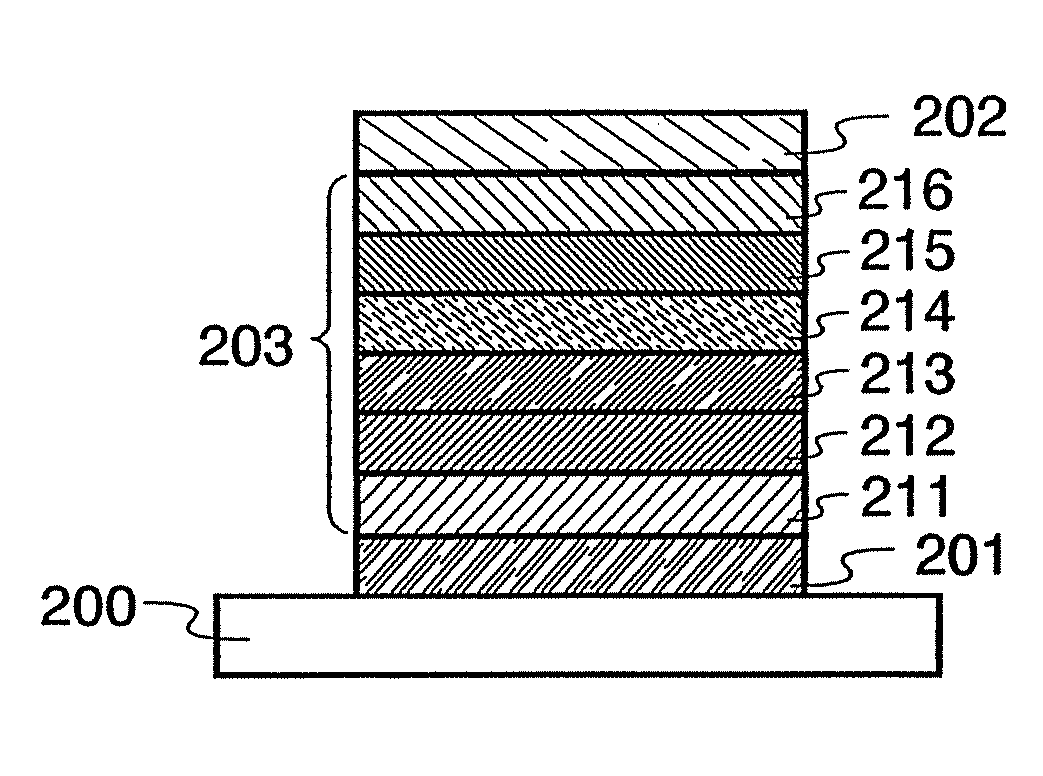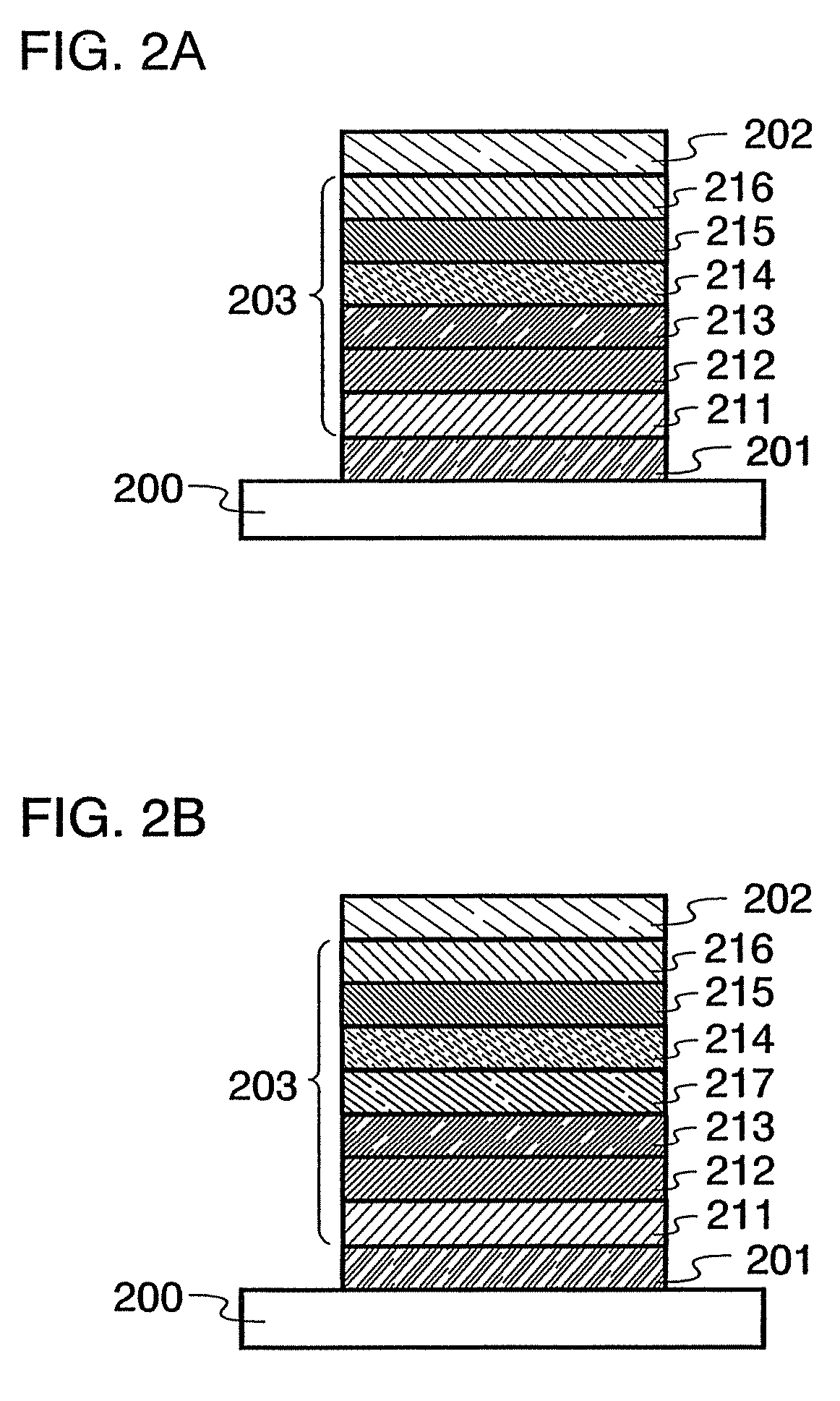Light-Emitting Element, Light-Emitting Device, Electronic Device and Quinoxaline Derivative
a technology of light-emitting elements and derivatives, which is applied in the direction of organic semiconductor devices, thermoelectric devices, organic chemistry, etc., can solve the problems of difficult to obtain features, short lifetime of light-emitting elements, and poor durability of hole blocking layers, so as to suppress the change over time of carrier balance, the effect of long lifetime and high visibility
- Summary
- Abstract
- Description
- Claims
- Application Information
AI Technical Summary
Benefits of technology
Problems solved by technology
Method used
Image
Examples
embodiment modes
[0071]First, a factor of luminance decay in a light-emitting element will now be described. In general, many light-emitting elements are driven by a constant amount of current, and in such a case, luminance decay indicates decrease of current efficiency. The current efficiency is light output with respect to flowing current, and thus is greatly dependent on how many carriers of flowing carriers contribute to recombination (carrier balance) or how many carriers of the carriers recombined (i.e., exciton) in a light-emitting layer contribute to light emission (quantum yield).
[0072]Therefore, as the factor of luminance decay, change over time of carrier balance or deterioration over time of quantum yield is thought to be a major factor. The present invention focuses on change over time of carrier balance.
[0073]Hereinafter, Embodiment Modes will be explained in detail below with reference to the accompanied drawings. It is easily understood by those skilled in the art that modes and deta...
embodiment mode 1
[0075]A principle of a light-emitting element of the present invention will be described first. FIG. 1 is a band diagram of the light-emitting element as an example. The light-emitting element of the present invention includes a first layer 114 and a second layer 113 including a light-emitting substance between a first electrode 101 and a second electrode 102. The first layer 114 is formed between the second layer 113 and the second electrode 102. The first layer 114 includes a first organic compound 141 and a second organic compound 142 each having an electron-transporting property, and includes the first organic compound 141 more than the second organic compound 142. In addition, as shown in FIG. 1, the LUMO level of the second organic compound 142 is lower than the LUMO level of the first organic compound 141, and thus the second organic compound 142 has an electron-trapping property. In addition, the second layer 113 shown in FIG. 1 has a structure in which a light-emitting subs...
embodiment mode 2
[0150]Embodiment Mode 2 will describe a synthesis method of the above quinoxaline derivative of the present invention. A synthesis method is described below, using the quinoxaline derivative represented by the general formula (1) as an example.
[0151]The quinoxaline derivative represented by the general formula (1) can be synthesized from 3,3′-diaminobenzidine, α-diketone A represented by a general formula (3) and α-diketone B represented by a general formula (4).
[0152]Note that at least one of R1 to R10 is any of a fluoro group, a cyano group, a trifluoromethyl group, a nitro group, an acyl group and an acyloxy group, and the others are hydrogen.
[0153]Note that at least one of R11 to R20 is any of a fluoro group, a cyano group, a trifluoromethyl group, a nitro group, an acyl group and an acyloxy group, and the others are hydrogen.
[0154]In other words, as represented in a synthesis scheme (a), 3,3′-diaminobenzidine, α-diketone A represented by the general formula (3) and α-diketone B...
PUM
 Login to View More
Login to View More Abstract
Description
Claims
Application Information
 Login to View More
Login to View More - R&D
- Intellectual Property
- Life Sciences
- Materials
- Tech Scout
- Unparalleled Data Quality
- Higher Quality Content
- 60% Fewer Hallucinations
Browse by: Latest US Patents, China's latest patents, Technical Efficacy Thesaurus, Application Domain, Technology Topic, Popular Technical Reports.
© 2025 PatSnap. All rights reserved.Legal|Privacy policy|Modern Slavery Act Transparency Statement|Sitemap|About US| Contact US: help@patsnap.com



